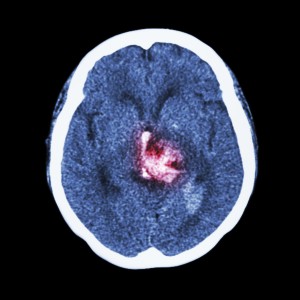Daily Archives: January 19, 2016
CONCUSSION
With increased physical activity comes greater mobility and health. When this activity occurs simultaneously with others, it is more enjoyable. When competition is introduced into these activities, so do opponents. This competition, although friendly, and exercised most often with sportsmanship and respect, can lead to injuries. Some of these can be seen (bruises, cuts, broken bones, sprained joints), while others cannot (whiplash and concussion). The former are fairly straightforward and not difficult to diagnose via physical exam and imaging, if necessary. They also have straightforward treatments: wound care, casting, surgery, splinting, rest, ice, etc. The latter are more difficult to diagnose and treat, as imaging is almost always negative and diagnosis is based on clinical exam, symptoms, and history.
The forces involved in a whiplash injury, common in rear end motor vehicle collisions, although intense, are only a fraction of those involved in a concussion. That being said, most concussions are associated with a concomitant whiplash injury. So what is a concussion? A concussion occurs when direct or indirect trauma occurs to the head and neck resulting in abrupt deceleration of the brain and soft tissues of the neck, e.g. two football players’ heads coming into direct contact with one another from opposing directions at high velocity or the elderly individual who falls to the floor striking his or her head. As the bony skull comes to a rapid stop, the brain (with its gelatin-like consistency) continues to move in the direction of the moving individual until it comes to a halt against the confines of the bony skull. If severe enough, hemorrhaging may be seen on imaging (subdural hematoma). However, skull x-rays, CT scans and / or MRI of the brain may be completely negative, that is, there is no evidence of bleeding, swelling / brain asymmetry, or bony fracture. Clinically, however, the individual may experience nausea, visual changes, sleep alteration, headache, poor concentration, light sensitivity, depression and, or other emotional disturbances. These are common symptoms of a concussion. Neuropsychological, balance, concentration, and reaction time testing are often impaired in affected individuals. In most cases, rest and time will allow natural resolution of symptoms and return to normal. However, when these symptoms persist more than a couple of weeks, this is referred to as post-concussive syndrome.
The treatment of acute concussion usually is conservative and consists of adequate rest, hydration, aerobic exercise, and a slow return to activity. The more severe the symptoms, the longer the recovery and duration before return to play is safe. Return to play in athletes should not occur until symptoms are completely resolved and testing back to baseline. The reason is that the concussed brain is extremely vulnerable to more long-lasting neurological deficits if another concussion is sustained before the previous has completely resolved (second-impact-syndrome, or SIS).
In addition to hydration, nutritional supplementation, rest, and avoidance of contact sports, Osteopathic Manipulative Treatment (OMT) has been found to be a very safe and effective adjunct to the treatment of concussion and post-concussive syndrome. Studies have shown that symptom severity and duration of symptoms is reduced in affected individuals when treated by a qualified osteopathic physician. Furthermore, the concomitant cervical spine (neck) / whiplash injuries are simultaneously treated and contribute greatly to the concussed individuals return to normalcy. The treatment involves specific maneuvers to the skull and cervical spine, which seek to correct muscle tension, skeletal misalignment and restriction in the cervical spine and cranium. After the initial assessment, each treatment takes about 20 to 30 min and should be performed weekly for the first few weeks and then less frequently after the first month. Treatment is individualized to the patient and takes into consideration age, other preexisting conditions, and daily routine, i.e. student, athlete, full-time employee, retiree, etc.


